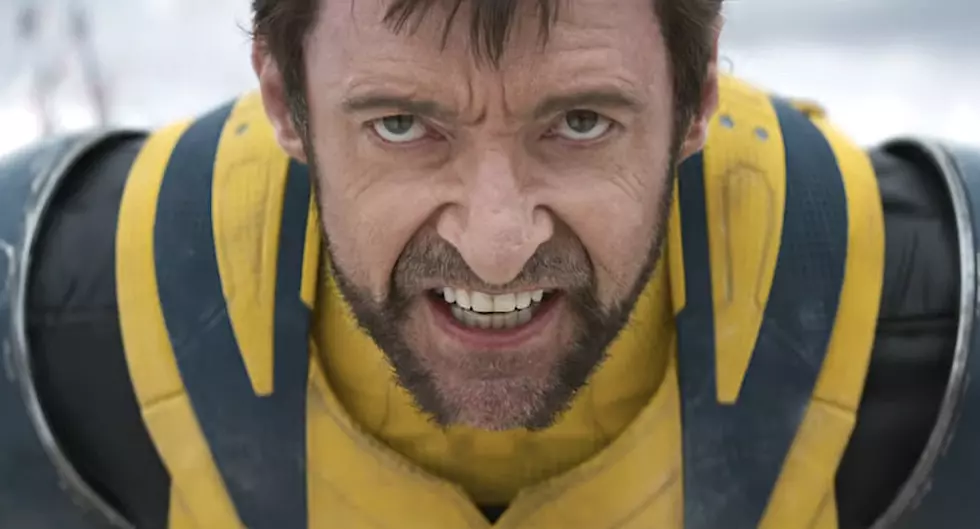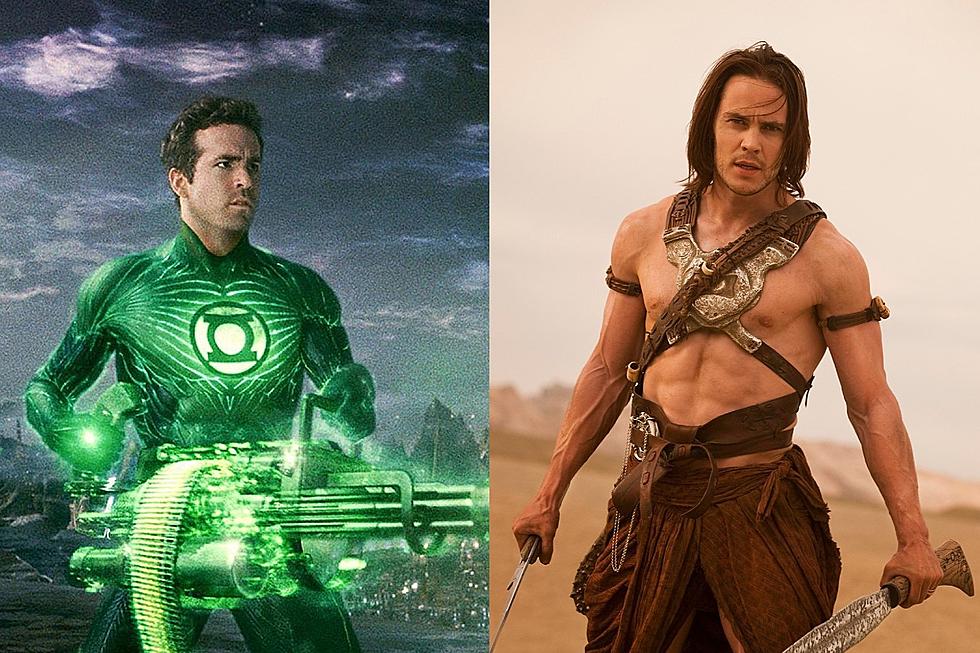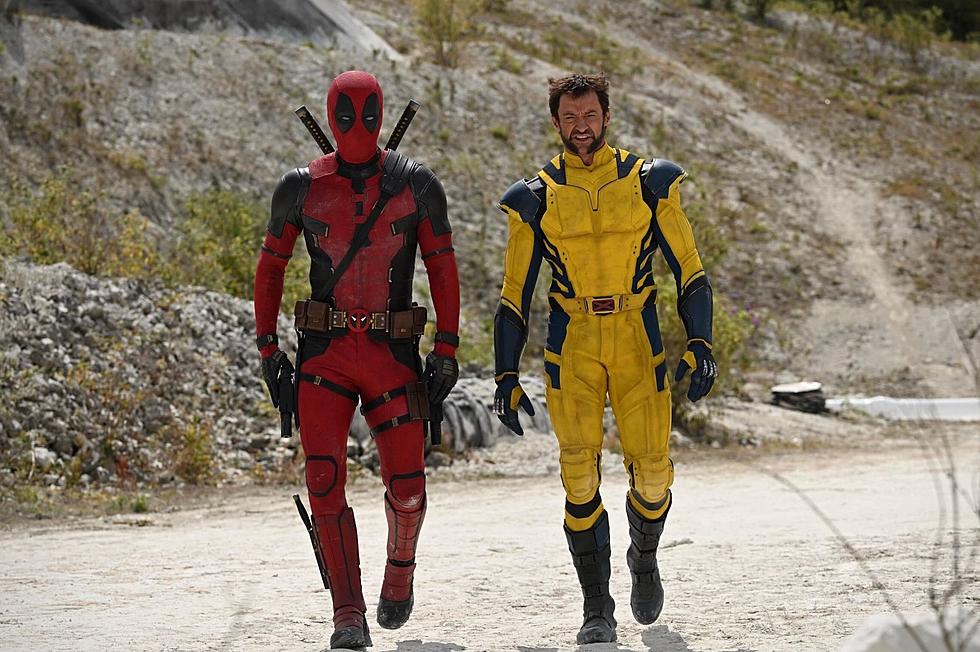
Cinemautopsy: What Went Wrong With ‘Green Lantern’?
In Cinemautopsy, we look back at a recent, high-profile failure and ask a simple question: What the hell happened? In this installment... a long-running superhero. The megastar lead of another wildly popular comic-book movie. A massive sci-fi epic with an all-star cast. The guy who reinvented James Bond twice. The guy who went on to launch DC’s TV empire. What could possibly go wrong?
Oh my God, you guys. So much could go wrong.
Movie: Green Lantern
Director: Martin Campbell
Writers: Greg Berlanti, Michael Green, Marc Guggenheim, Michael Goldenberg
Release date: June 17, 2011
Worldwide box office: $219.8 million
Reported budget: $200 million
Rotten Tomatoes rating: 26
CinemaScore: B
Franchise context: First (and, to date, only) Green Lantern film.
What Went Right:
The entire movie is in focus. So that’s something!
There aren’t a lot of highlights in Green Lantern, but the filmmakers did a very good job of bringing Sinestro to the screen. On the page, he’s one of the most complex GL characters — sometimes an ally of the Lanterns, sometimes a nemesis — and even within the constraints of a two-hour movie, director Martin Campbell manages to do a decent job of approximating the character’s intricacies. He’s sort of the Magneto of the DC Universe; a guy who’s done a lot of horrible things, but often commits terrible acts in the interest of a noble (or at least relatable) goal. The Green Lantern movie captures that spirit, and Mark Strong gives a good performance as well. He even pulls off the character’s outlandish look (purple makeup, pointy ears, and a widow’s peak). The film kind of ruins a lot of the goodwill it builds up around Sinestro with its horrible post-credits scene. Until that point, though, he’s the clear standout.
If you’re a longtime Green Lantern fan (and I am), then it’s easy to get a kick out of the way the film visualizes the character’s powers. Green Lantern’s ring can create anything its wearer imagines, and a lot of the pleasures of Green Lantern comics are the creative ways GLs use their gift to save the day in unconventional ways. Campbell incorporates that into the movie. At one point, Hal Jordan (Ryan Reynolds) uses a giant version of a Hot Wheels track to stop a runaway helicopter. At another he pulls himself through outer space with a pair of green fighter jets. There’s even a few nods to the big green fists that Jordan tended to rely on to punch folks in the earliest Green Lantern comics. If nothing else, that stuff’s fun. The problem is there really is nothing else.
What Went Wrong:
It’s the most common complaint about almost every comic-book movie, good or bad: “It’s not faithful to the comics!” Green Lantern is maybe the best proof to date that when it comes to superhero movies, faithful doesn’t equal excellent. Green Lantern is a very faithful take on the DC Comics mythos about a league of intergalactic peacekeepers who use super-powered rings to fight injustice in the universe. Longtime Green Lantern comics writer Geoff Johns was a co-producer on the film and director Martin Campbell squeezed a ton of GL canon into his adaptation. Arguably too much.
The movie opens with an elaborate infodump (narrated by Geoffrey Rush) explaining at length the concept of a Green Lantern Corps of heroes drawn from all over the universe. Green Lantern also includes the Guardians of the Universe (the ancient race who created and oversee the Green Lanterns), several of the most popular Green Lanterns like Kilowog (voiced by Michael Clarke Duncan) and Tomar-Re (Rush). It also introduces Parallax, the embodiment of fear that serves as a kind of arch-nemesis of the Green Lanterns (who represent the power of will), and Hector Hammond (Peter Sarsgaard), a super-villain with enormous mental powers (which come from his enormous head). The movie also hints at Sinestro’s eventual defection from the Green Lanterns to form his own Sinestro Corps, who use yellow rings to terrorize the universe.
Rather than focusing on the story of its human Green Lantern and slowly teasing this wider universe of action and mystery (if not completely saving it for future movies once general audiences have bought in to the Green Lantern concept), the movie dives right in to all of the nerdiest stuff from the GL universe. It’s a bit like trying to start the Marvel Universe with The Avengers, with its aliens and gods and Hulks, instead of the relatively grounded Iron Man, which is about a guy who invents a suit of armor. By the end of Green Lantern, Sarsgaard’s Hector Hammond has a giant, veiny testicle growing out of his forehead. Is it comics accurate? Actually, it is. But some things that work on the page don’t work on the big screen.
The screenplay, credited to four different writers (including Greg Berlanti and Marc Guggenheim, who went on to write and produce successful DC TV shows like Arrow, The Flash, and Legends of Tomorrow), tries to pair Hal’s emergence as a Green Lantern with Hector’s descent into madness, as if they’re dark mirror images of one another. But even before he becomes a superhero, Hal Jordan is a handsome test pilot with a fantastic apartment and a busy dating life. Hector Hammond has a terrible mustache and looks older than his dad. (In a baffling bit of casting, Campbell picked Tim Robbins to play Hector’s father, even though Robbins is just 12 years older than Peter Sarsgaard.) Hal and Hector never feel like equals, and the vague allusions to their past encounters actually make their battles more confusing.
On the page, Hal Jordan can read as a little bland; he’s typically portrayed as an earnest, heroic dude with a bit of a reckless streak. The Green Lantern movie tried to inject a little flavor into the guy by casting Ryan Reynolds and by having him act like a typical Ryan Reynolds character: Snarky and cocky in a way that masks deeply buried pain. But Reynolds’ constant wisecracks don’t read as funny a lot of the time. Instead, they just make Hal sound really whiny. He’s constantly complaining about his boss and his family and his dead father and feeling afraid when he’s a hunk with a good job and a gorgeous girlfriend and the coolest weapon in the universe. Who wants to root for a hero who just kvetches all the time?
Martin Campbell has directed some very good movies (Casino Royale, GoldenEye, The Mask of Zorro), but Green Lantern doesn’t play to his strengths. Campbell’s best titles are lean, and heavy on gritty, practical action and stunts. Green Lantern is mostly Ryan Reynolds grimacing and flexing in a CGI suit on a green screen surrounded by CGI aliens on a CGI world. Almost nothing onscreen is real, up to and including the sense of adventure. It’s just a bunch of digital stuff shooting other digital stuff. And some of that digital stuff looks really bad.
In the months before Green Lantern’s release, there was a lot of worry about Reynolds’ costume in the movie, which was made with CGI rather than spandex or leather. (Here’s a typical example of the hand-wringing.) The finished suit looks pretty good, and the way energy courses through the veins of the costume is a nice touch. But Hal’s digital mask, which is oddly shaped (look at the way it covers his nose!), and the way Reynolds’ eyes lighten every time he uses his powers make him look a little bit like a cat pretending to be a human.
Still, Reynolds in his GL costume looks like a Michelangelo statue compared to the Guardians (whose mouths don’t seem to match their dialogue), and Parallax. In the comics, Parallax is typically portrayed as this monstrous bug-like parasite. The movie’s version of Parallax is like the Galactus cloud from Fantastic Four: Rise of the Silver Surfer mated with an octopus, and their baby took a giant poop and the poop gained sentience and sounded like Clancy Brown.
When Parallax devours people, it sucks out their souls in the form of yellow energy skeletons. But after Parallax sucks out their delicious, delicious soul skeletons, the husks he leaves behind are also skeletal. So by eating your skeleton energy he turns you into a skeleton? How does that work?
Also, Blake Lively plays Carol Ferris. That went wrong as well.
Postmortem:
Five years after Green Lantern, it feels like Warner Bros.’ DC Cinematic Universe still hasn’t fully recovered from its failure. The studio was so confident the movie would launch at least one sequel that they inserted a teasing post-credits scene even though its content completely conflicted with Sinestro’s character arc through the rest of the film. Green Lantern 2 never materialized, and Green Lantern 1 was left even more compromised than it was before, and for no good reason.
That’s Green Lantern in a nutshell: Things don’t entirely make sense, but hey it was in the comics, and it looks kinda cool, so here it is. Now Warner Bros. is working on a Justice League movie with the heaviest of DC heavy hitters; Superman, Batman, Wonder Woman, the Flash, Aquaman, and Cyborg. The only human Justice League founder who’s not in the movie? Green Lantern. Five years later, the character is still radioactive. It’s like Green Lantern tossed himself into the sun at the end of the movie, rather than Parallax.
Reynolds’ career was hurt by Green Lantern too, though in a roundabout way, he’s reaping the benefits of it now as Deadpool. As the sarcastic mutant mercenary (who’s a lot like Reynolds’ Hal Jordan except his life sucks and he’s hideously scarred, so his cranky jokes feels a lot more appropriate), Reynolds got to poke fun at his previous superhero flop, begging the bad guys who give Deadpool his superpowers not to make his costume “green or animated.”
Reynolds got to show he was a good sport about the whole thing and the line got huge laughs. (It even popped up in Deadpool’s trailer.) The only laughs in Green Lantern, sadly, were unintentional ones. At less than 120 minutes, there simply wasn’t enough time to fully flesh out all of its ideas and subplots and side characters. Warner Bros. eventually released an Extended Cut on Blu-ray, but most of the extra material comes from a superfluous prologue about Hal as a kid. It barely makes a difference. This movie is a skeleton waiting to be devoured by Parallax.
More From ScreenCrush









